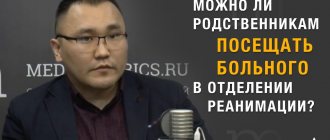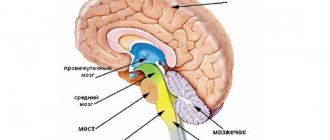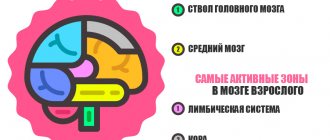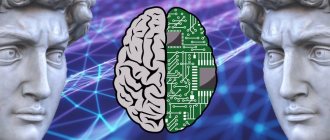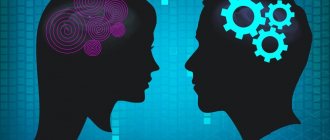Refutation of the theory
Modern scientists, in particular, neuroscientist B. Gordon, have provided several arguments that completely refute the myth of 10% brain use. These include:
- During natural selection and the passage of stages of evolution, only the characteristics that were significant for a particular species were selected. If 90% of the brain did not perform any functions, then, accordingly, in the process of evolution, these parts of the central nervous system would disappear.
- Modern research methods, that is, various scans, make it possible to determine the absence of blind spots in brain activity. The appearance of inactive areas is observed only in individuals who have some kind of brain damage.
- It has been experimentally proven that each part of the brain is responsible for a specific function. If a part of the brain is damaged, in any case, some kind of disturbance in central nervous activity will occur.
- It has been proven that every single brain cell is functionally active.
- In the course of research, it turned out that non-use of any part of the human body (part of an organ or even a limb) leads to its atrophy, and in some cases to replacement with connective tissue. If there were inactive areas in the brain, they would atrophy or degenerate.
Why the human brain does not work at 100%
Scientists point out that if the brain worked at 100%, the overall load would become unbearable for people. Therefore, only small areas of neurons are used in the organ; they are constantly changing depending on the task at hand. As a result, the body, while developing, spends a minimum of energy, processing maximum information.
Some scientists claim that in a moment of panic or a stressful situation, the human body activates the percentage of the organ that is not used. After all, it is then that a person receives a large amount of information that is necessary and useful at that moment.
All skills and abilities are stored in memory and can be displayed if necessary. Therefore, to summarize, we can say that it is almost impossible to find a clear answer to the question of what percentage the human brain works at.
The brain has HUGE POTENTIAL!
This is what you wanted to hear) From the previous point it turns out that the brain almost always works to its fullest, in ordinary life, we just don’t notice it. And regarding how much brain we use, it would be more correct to say that “ We do not use 10% of the brain, but closer to 100%, BUT we are able to increase the efficiency of the brain TENS OF TIMES!” " Why?
Neural connections! This is the future. Neural connections are your mind, memory, attention, imagination, logic, even coordination of movements! From birth, we create many connections between neurons, this is a kind of sequence that teaches us. As children, we make mistakes for ourselves, but we learn about life. And as adults, we constantly use these connections, “don’t cross the road, take care of your health, etc.”, we build logical chains, why we think so, these are neural connections.
Why is the integral needed? (question for humanists) What are the consequences of sudden inflation? (question for techies). We've all come across these words, but we don't remember them, we just know about them. We do not have the appropriate neural connections, or they are very weak. Is walking easy for you? Strong connections – trained from birth. Imagine what would happen to you if you were trained in mathematics or economics from birth? Geniuses, but who want with difficulty)
What if we speed up the formation of neural connections 10 times? Yes, this requires additional energy. And what if we slow down “forgetting” by 10 times, that is, the weakening of neural connections? More energy. But learning will take place 10 times faster, 1st grade at school in 10. ATTENTION! There are already drugs appearing that are capable of this, scientifically speaking - drugs that increase NGF, for example - Cerebrolysin, the substances Idebenone, Noopept, Semax, Sunifiram, Idra-21 have an effect in animals - but the consequences are still unknown.
Is there a 10% brain?
A person uses only 10 percent of the brain's capacity. Everyone has heard this statement at least once. But in fact this is a myth! Scientists, with a significant dose of sarcasm, ask the question: if only 10 percent of the brain “works,” then what is the other 90 doing?
The answer is this. If we consider the brain as one of the human organs, a certain physical substance that consists of tissue and neurons, then the myth is immediately shattered. After all, scientists, using high-precision scanning (PET and MRI), have long established: there are no “sleeping” areas of the brain, a person constantly uses all areas.
There is further evidence: the devastating effects of brain damage. After all, if 90 percent of it is not used, then injuries to the “useless” parts should not affect the work. But practice shows: even minor damage can lead to serious consequences.
However, it is worth considering that many perceive information about the 10 percent of the brain in demand only as a call to improve their own abilities. That is, we are not talking about any specific “sleeping” areas of the brain, but about intelligence, which can be developed with the help of exercises. This is, of course, true: we really have an unlimited opportunity for intellectual enrichment, the development of memory and attention, logic and intelligence.
But even in this case, it is difficult to recognize the statement about 10 percent as true: intelligence is not determined by the volume of gray matter. And it is impossible to calculate any percentage of our brain use.
Who came up with the myth of 10 percent and why?
According to one version, he appeared after the work of American psychologists William James and Boris Sidis . Sidis tested his theory of accelerated child development on his own son, William, whom he named after his partner and friend.
Today, William Sidis is considered one of the most gifted people on Earth. His IQ level reached a record level of 250-300 points. Sidis learned to write by the end of his first year, passed the Harvard Medical School exam in anatomy at age seven, knew eight languages by age eight, and was fluent in forty by adulthood.
In 1936, Dale Carnegie's How to Win Friends and Influence People appeared. In the preface to it, the American writer Lowell Thomas wrote: “Professor William James says that people use only 10 percent of their mental faculties.” Where William James said this remains unclear, but Carnegie's book has sold millions of copies around the world. Along with it, the myth of the 10 percent spread.
There is another version of the birth of a widespread myth. In the middle of the last century, scientists knew about the brain only that it was made up of neurons and that they generated electrical signals. Then someone came up with the idea: if a neuron generates an impulse, then, therefore, it works, and if not, then it is just “lazy.” Based on this idea, we decided to check how many neurons in the brain are real “workers” and how many prefer to “sleep” all the time.
And now imagine. There are more than 100 billion neurons in the brain, and it is simply impossible to measure the activity of each of them. This will take more than a dozen years! Therefore, scientists took a simple path: they decided to “derive the average.” We explored a small
| Larisa Kachalova, director of the Institute of Cognitive Neurology of the SGA, is convinced that the myth about the brain is “the biggest nonsense”, which is profitable when you need to sell something supposedly “for brain development.” |
part of the brain, identified the percentage of active neurons and decided that the picture was similar in all its parts. And it turned out that just about 10 percent of the brain “works.” However, this conclusion cannot be considered correct, and here's why.
To simplify the picture, the brain works according to the following scheme. It consists of many areas, each of which is responsible for something different. One area is for movements, the second is for sensations, the third is for emotions, and so on. And all neurons in all areas never turn on at once. After all, if we don’t walk, then the neurons responsible for walking are not active. When we don’t experience fear, our “fear neurons” don’t work. In other words, if neurons are not needed, then they simply “sleep”. And this is very good. After all, if you “excite” them all at once, the body simply cannot stand it.
If you know all these facts, the myth about the “sleeping” areas of the brain becomes simply absurd. Director of the Institute of Cognitive Neuroscience of the SGA Larisa Kachalova says that this myth is “one of her least favorite” and that it clearly has a commercial meaning.
Neurophysiology guarding memory and intelligence
Recently, information has become increasingly common on the Internet that with age, the brain is quite capable of not regressing, but quite the opposite - to blossom and work at full strength. Moreover, it is argued that the age of 60–80 years is the best time for doing science, learning languages and writing memoirs. But our eyes and ears tell us the opposite: in general, in the population, as age increases, the number of people who need constant outside care and supervision increases sharply.
Who is right?
The topic of development and restoration of the human nervous system occupies scientists more and more. Technological advances over the past decades have provided a wealth of new information about the brain. Some scientific forums attract more than 3,000 participants - this is a sea of new information. Almost every area of the brain and the neurophysiology of almost every conceivable body function have been studied.
For example, it is known that the hippocampus (from the ancient Greek ἱππόκαμπος - seahorse) is responsible for the work of operative memory (memory for immediate events) - part of the limbic system of the brain, which regulates the ability to learn. It turned out that the hippocampus is badly affected by polluted air and air with low oxygen content, constant consumption of fast food and lack of physical activity.
How many brain functions
Man has been studying the world around him since time immemorial, learning more and more deeply about the cosmic distances and ocean depths, but he still knows very little about his own body. Natalya Petrovna Bekhtereva, for example, devoted her entire life to studying the functions of the human brain. She asserted with full responsibility and knowledge of the matter that no more than 10% of the brain’s capabilities have been explored, and only 5 (five!)% of its capabilities are involved in everyday life. Based on this, the capabilities of the brain can be imagined as a huge iceberg, the tip of which has been more or less explored, but a large, hidden part remains mysterious, which is still waiting for its pioneers. Studying the capabilities of the brain itself raises many questions. Why do different people have such different capabilities? Why does one person easily master a course in quantum physics at an age when his peers are just beginning to get acquainted with physics as a subject - at 11-12 years old, while another can barely master literacy? Why do people in stressful situations awaken hidden abilities, which then disappear, and sometimes remain? How can we explain the officially documented phenomena of super-high capabilities that, for example, Wolf Messing possessed? By the way, speaking about Messing, it is worth remembering that he himself did not understand the nature of his superpowers, and always insisted that they be studied, expressing his readiness to be a “laboratory mouse.” Not long ago the BBC released a film about the human brain. Let's take just ten amazing facts about the human brain.
- The human brain is so complex that it takes about 20 years to develop.
- In the womb, the brain produces 8,000 new cells every second.
- By the time of birth, all the necessary cells have already formed in the brain.
- The human brain is the "most complex device" in the known universe.
- Newborns recognize their mother's face after just a few hours of interaction.
- The human fetus can see even while in the womb, but only in black and white. Their eyes are sensitive enough to see the light coming through their mother's belly.
- People blink up to 20 times per minute. Each blink lasts about half a second. If you add them together, it turns out that people are in the dark for more than an hour a day.
- Each brain cell is connected to, on average, 10,000 other brain cells.
- The famous neurosurgeon Professor V.V. Krylov , when asked how much our brain has been studied, answered: “I think that our brain is the same infinity as our Universe.”
